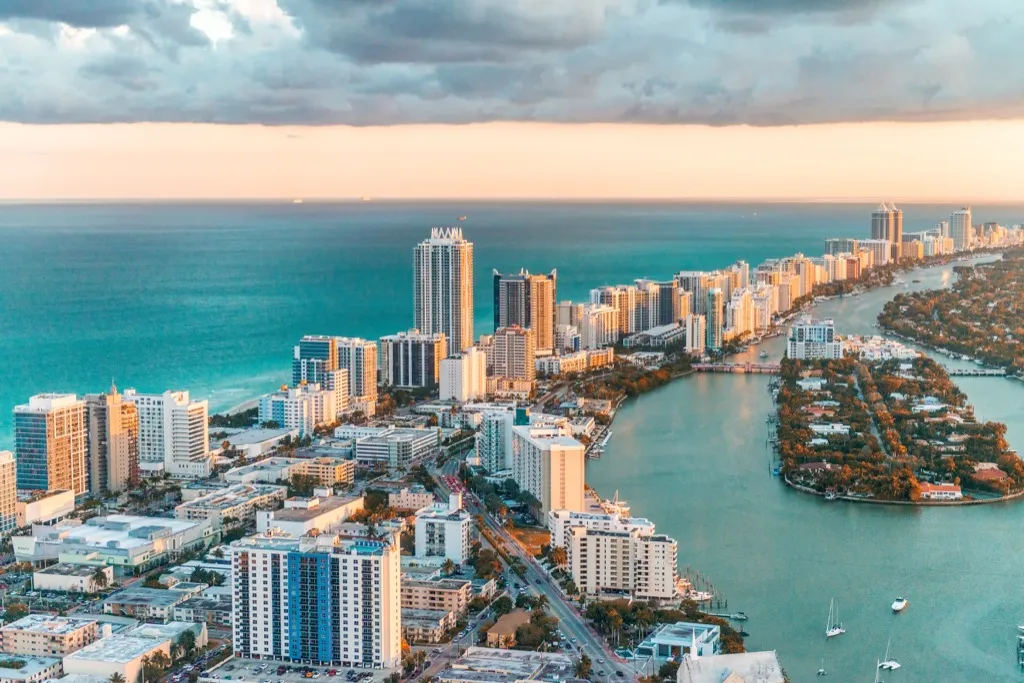The CDC’s study, which was published in the JAMA Internal Medicine journal on July 21, used blood samples from people in certain areas that were taken for reasons unrelated to COVID-19, like a routine visit. They used the presence of antibodies to evaluate the number of possibly infected patients that did not get tested for coronavirus between March and May—likely because they did not realize they were sick, due to a lack of symptoms or a mild case. Using this data, these are all the places where the CDC says COVID numbers are likely much higher than you think. And for more on testing, This Is the Type of COVID-19 Test You Should Be Asking For. Connecticut reported nearly 30,000 coronavirus cases by May 3. However, during that same time period, the CDC estimated that the state actually had around 176,000 coronavirus cases—which is nearly six times higher than reported. Another round of samples for this state was taken later between May 21 and May 26, and showed that the infection rate was still higher than reported. In this round, more than 41,2oo cases were reported by May 26, but the CDC estimated that the numbers were at least four times higher, around 185,000. And for more statistics, check out the 9 States Where COVID Cases Are Rising Faster Than California and Texas. Louisiana may be one of the most under-reported states, as the CDC estimated that the number of infections in the state was 16 times higher than reported between April 1 to April 8. While the state reported around 17,000 cases, the CDC estimated there to be around 267,000 cases. For Minnesota, the study looked at the the Minneapolis-St. Paul-St. Cloud metro area. Around 8,880 coronavirus cases were reported here by May 12. Looking at samples from April 30 to then, the CDC actually estimated that the amount reported should be closer to 91,000. This estimation is 10 times higher than what was reported. Testing may have gotten better over time, however, because looking at samples from May 25 to June 7, the difference was only at least three times higher. Missouri was severely behind in testing for the month of April, according to the CDC. The state reported around 6,800 cases by April 26, but the agency says they were most likely looking at around 162,000 cases during that time period. That is 24 times higher than reported. The second data sample looked at—from May 25 to May 30—wasn’t much better, with cases estimated to be at least 13 times higher than reported.ae0fcc31ae342fd3a1346ebb1f342fcb The CDC’s report looked at the New York City metropolitan area, which includes Suffolk, Kings, Queens, Nassau, New York, Westchester, Richmond, and Bronx counties. Combined, this area reported around 53,800 cases by April 1. The CDC says they should have reported nearly 642,000 cases, which is at least 12 times higher. For the second batch of data, the cases only increased to a reported 281,700 cases by May 6. The CDC says that should have been closer to 2.8 million cases, which is at least 10 times higher. For the Philadelphia metropolitan area, the CDC looked at Bucks, Chester, Cumberland, Delaware, Lancaster, Montgomery, and Philadelphia counties. Collecting 824 samples from April 13 to April 25, the agency found that the area should have reported about 157,000 cases by April 25. They only reported around 23,000, which means their infection numbers were actually seven times higher than reported. From May 26 to May 30, they reported it to be at least four times higher. And for more up-to-date information, sign up for our daily newsletter. The CDC also looked at the entire San Francisco Bay Area, which includes Marin, Contra Costa, Alameda, Santa Clara, San Mateo, and San Francisco counties. Looking at these places, the CDC estimated that by April 27, this area had at least nine times more coronavirus cases than reported. They had reported only a little more than 7,000 cases at the time, but potentially had over 65,000. And for more on California cities, This Major City Is “On the Brink” of a New Stay-At-Home Order, Mayor Says. South Florida, which includes Miami-Dade, Broward, Palm Beach, and Marin counties, reported a little more than 10,500 cases by April 10. The CDC says they should have reported 117,000 cases, which is at least 11 times higher. By April 24, they had reported just over 18,200 cases. The CDC says they should have reported 181,000 cases by then, which is still about 10 times higher.
Utah cases were nearly 11 times higher than reported from April 20 to May 3, the CDC says. However, by their second round of testing, the state estimates were only around two times higher. This was between May 25 to June 3, where the state had reported around 11,300 total cases, but should have reported around 25,000 total cases. And for more on states fighting the coronavirus, check out the 10 States That Were “Irresponsible” About Coronavirus, Study Says. By April 1, the western region of Washington State (which is King, Snohomish, Pierce, Kitsap, and Grays Harbor counties) had reported nearly 4,300 coronavirus cases. However, the CDC says they should have reported nearly 48,000 by this time. That’s 11 times higher than reported. Then by May 11, the area had reported nearly 13,000, but should have been reporting around 122,000—which is still nine times higher.









